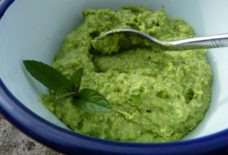The Value of Traditional Arabic Music in the U.S.

By: Sami Abu Shumays / Arab America Contributing Writer
I’ll never forget a conversation I had around 15 or 16 years ago when flying cross-country to perform. A chatty middle-aged white woman sat next to me on the first leg of my flight, engaging me in small talk. Eventually she asked what I did for a living, and I told her I performed traditional Arabic music. Speechless for a moment, she then said to me, “Really? I didn’t know Arabs had music! What is it like?”
Flabbergasted for a moment, I tried to explain to her that all people on earth made music, including Arabs. But she only knew about Arabs from the media, and we’re not shown as a people with culture; instead, we’re represented simply as a political problem. I did my best to educate her… I asked her if she had ever seen belly dancing… and it became clear that she was genuine: she’d never even considered the possibility that Arab people sang songs or played musical instruments!
The irony is that so many Arabs in the US – including my father – would rather forget their cultural heritage, preferring to assimilate completely. For some, Arabic music is a painful reminder of their past and their home countries, something they would rather dismiss as backward, while for others, it’s a source of nostalgia but not something to take seriously. Even many who practice this music seek to modify or “modernize” it, to make it more palatable or comprehensible to American audiences – some by portraying it as a “serious” “classical” music, others by simplifying it, adding Western instruments, harmonies, pop grooves – anything to make it sound less alien, less frightening, less different, less… Arab.

I’m part of a generation beginning to choose a different path. Many of us see the uniqueness of our musical heritage – poignant melodies, sensual rhythms, vivid poetry, powerful instruments – as an essential part of our identity, just as crucial to making us whole human beings as any other part of our culture, like the Arabic language, hand-stitched Tatreez embroidery, or a plate of hummus made from scratch.
For my contributions to Arabic Music in the U.S., I was recently honored by the Alliance for California Traditional Arts as one of 25 Taproot fellows in their inaugural cohort. Taproot Artists and Community Trust is a groundbreaking program that “recognizes the profound impact that traditional arts and cultural transmission have on the health and well-being of local communities across the nation. By harnessing generational and ancestral knowledge, the Taproot Artists & Community Trust aims to nurture the unique value of every culture, fostering an integrated, just, and empathetic social fabric.” I am the only Arab artist in this group of Fellows, which spans the US and includes many Native Americans and other artists passing on unique cultural knowledge.
I’m less interested in what this honor says about me than in what my selection says about the value of Arabic Music. For a long time, I have been a champion of oral tradition, teaching Arabs and Americans the crucial skill of learning music by ear. Even in my book, Inside Arabic Music, co-written with Maqam World creator Johnny Farraj, we uplift the value of informal, community-based transmission above formal Western-style pedagogy to keep this music tradition thriving.

Collaborating with Brooklyn Maqam in New York City for the last six years, I have helped to foster a community where people are proud to celebrate their connection to traditional music and musicians can learn from one another. As Deputy Director of Flushing Town Hall in Queens, NY, I have helped to spotlight the importance of traditional cultural practices worldwide. To me, the Taproot Fellowship is a sign of the worthiness of Arabic Music and of the value of my approach to it as a performer, educator, and administrator: communal, oral, informal, rather than hierarchical and rigid.
Of course, especially in these times of ongoing genocide, the act of representing Arabs as artistic and cultural human beings is a political statement. I’m very proud to be part of a group of Palestinian, Lebanese, Syrian, and Iraqi artists who put together the fantastic Tanfis II program, which will give a Palestine/Gaza benefit tour of California from October 12-16, 2024.
This project combined traditional music with remixes, video art, and testimonials from the artists – and allowed us to connect our love of this music with our experiences as diaspora artists in the U.S. “The tour aims to positively shift the cultural consciousness needed to break the cycle of fear and violence by uniting us through Levantine music, storytelling, and remix, as well as to fundraise for critical emergency relief for Palestinians in Gaza/Palestine.” Please join me in celebrating our unique cultural heritage, both traditional and new, at the Tanfis II • Palestine/Gaza Benefit Tour California from Oct 12-16, presented by Remix ⟷ Culture.
Check out our blog here!








